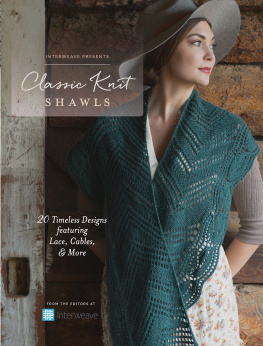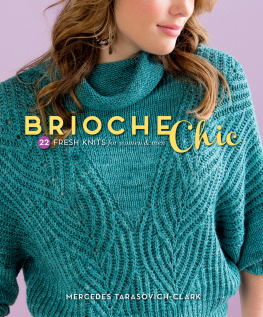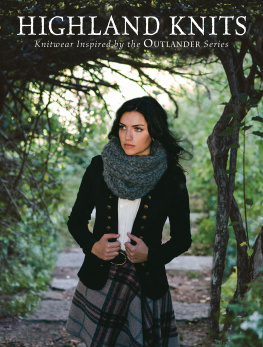THE BEST OF
INTERWEAVEknits
Our Favorite Designs from the First Ten Years
edited byANN BUDDwith an introduction byPAM ALLEN


Joe Coca

For every knitter who has submitted a design for Interweave Knits


Contents



As editor in chief of Interweave Knits magazine, Ive spent a lot of time poring over design submissions. No matter which projects we finally choose for the magazine, its a pleasure to see that the creative imagination is always at work in the sketches and swatches that pile up on the table. Whether or not Im taken with a sweater idea, Im always interested to see how each designer approaches knitwear design. Sometimes a designers focal point is a stitch patternperhaps its used all over or only in a particular area of a sweater. Sometimes a designer combines different patterns or adds colors with a happy resultor a not-so-happy result.
A design might use traditional color-work patterns in a fresh way. Or the motifs might be nontraditional: The designer has used the knitted grid to create something entirely new. A design might be based on silhouette or on interesting detailsa jacket designed with princess seams or an otherwise plain pullover with a stunning asymmetric collar. Occasionally, a designer has begun with an unusual yarn and found exactly the right style to showcase that yarns beauty. And from time to time, a designers combination, though imaginative, doesnt quite come off: Proportions dont work, colors jar, or too many elements compete for attention.
The best moments, however, come when the contents of a submission envelope spill out and elicit a collective Ahhh! from the staff. This involuntary response is magical; we gather around and admire the for-the-moment perfect knitted project, one in which all the elements come together in knitted harmony. The stitches, yarn, colors, and proportions simply work!
For The Best of Interweave Knits, weve culled as many Ahhh projects from past issues as would fit into these pages. Weve chosen projects that showcase knitted color work, such as Marta McCalls Weekend Getaway Satchel and Ron Schweitzers Water Garden Fair Isle pullover; projects that thoughtfully marry stitch pattern to silhouette, such as Norah Gaughans Cabaret Raglan and Vronik Averys Threepenny Pullover; breathtaking lace projects, such as Miriam Feltons Icarus Shawl and Faina Letoutchaias Forest Path Stole; simple sweaters with details that make all the difference, such as Kate Gilberts Union Square Market Pullover and Barbara Venishnicks Burma Ringsand projects that are just plain good looking and fun to knit, such as Lana Hamess Stripes Go Round T-Top and Debbie Blisss Simply Marilyn.
Weve also added eleven of our regular Beyond the Basics technique columnsto add to your repertoire of knitting skills. We hope that this collection of some of our favorite knitted projects and articles will bring you hours of knitting pleasure.
Pam Allen


Vronik Avery
The idea for this fitted sweater came to Vronik Avery while her husband, Marcel, an actor, was playing a voyageur (a fur trader who traveled by canoe through the Canadian wilderness in the early 1800s) for a Canadian TV program. The arrowhead pattern on the Indian belts typically worn by voyageurs inspired Vronik to use a knitted version in a simple pullover design. Vronik twisted the stitches in the tilting lines to make them more distinct and allowed the arrowheads to form soft points at the neck and sleeve edges. For meticulously neat hems, she used a tubular cast-on and a sewn bind-off.
Finished Size
32 (36, 39, 43, 46, 50)" (82.5 [91.5, 100.5, 109, 118, 127] cm) bust/chest circumference. Sweater shown measures 36" (91.5 cm).
Yarn
DK weight (#3 Light).
Shown here: Jo Sharp Classic DK Wool (100% wool; 107 yd [98 m]/50 g): #009 lilium, 14 (15, 17, 19, 21, 22) balls.
Needles
Size 5 (3.75 mm): straight and set of 4 double-pointed (dpn). Adjust needle size if necessary to obtain the correct gauge.
Notions
Tapestry needle; stitch holders.
Gauge
24 sts and 32 rows = 4" (10 cm) in St st; 31 sts and 32 rows = 4" (10 cm) in arrowhead pattern, blocked.
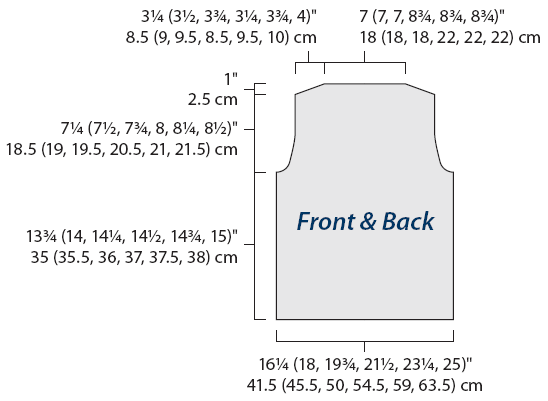
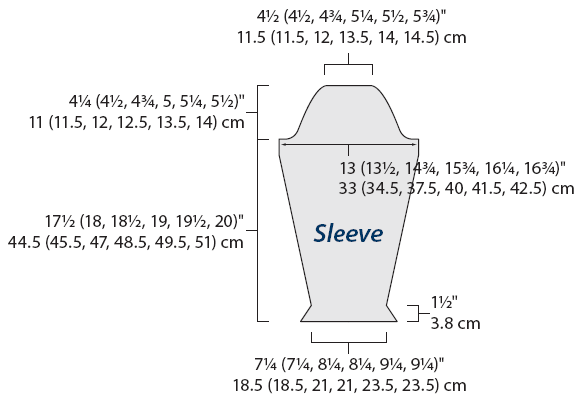
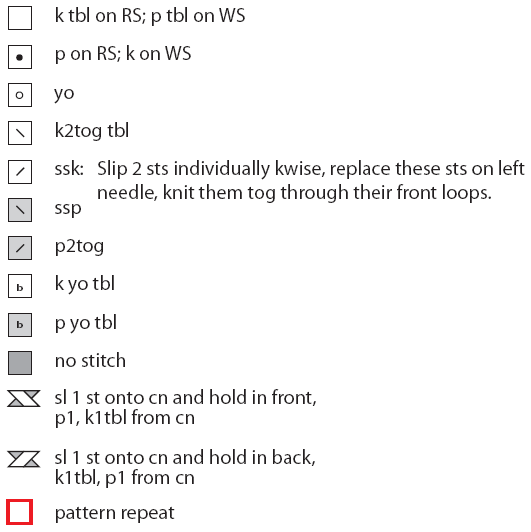
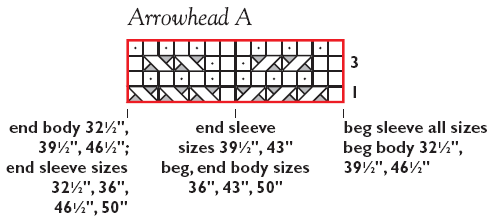

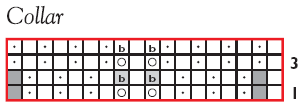

Note
- In shaped areas such as sleeve and armhole shapings, when there is not a pair of stitches to cross, work the odd stitch in stockinette.
Back
Using the tubular method (see ), CO 128 (142, 156, 170, 184, 198) sts. Next row: (RS) K1 (edge st), *k1 through back loop (tbl), sl 1 with yarn in front (wyf); rep from * to last st, k1 (edge st). Rep this row once more on WS. Next row: (RS) K1, *k1tbl, p1; rep from * to last st, p1. Work 1 row as established, working the purl sts tbl. Keeping 1 st in St st at each edge, work Rows 14 of Arrowhead A chart over center 126 (140, 154, 168, 182, 196) sts until piece measures 13 (14, 14, 14, 14, 15)" (35 [35.5, 36, 37, 37.5, 38] cm), ending with a WS row.
Next page

